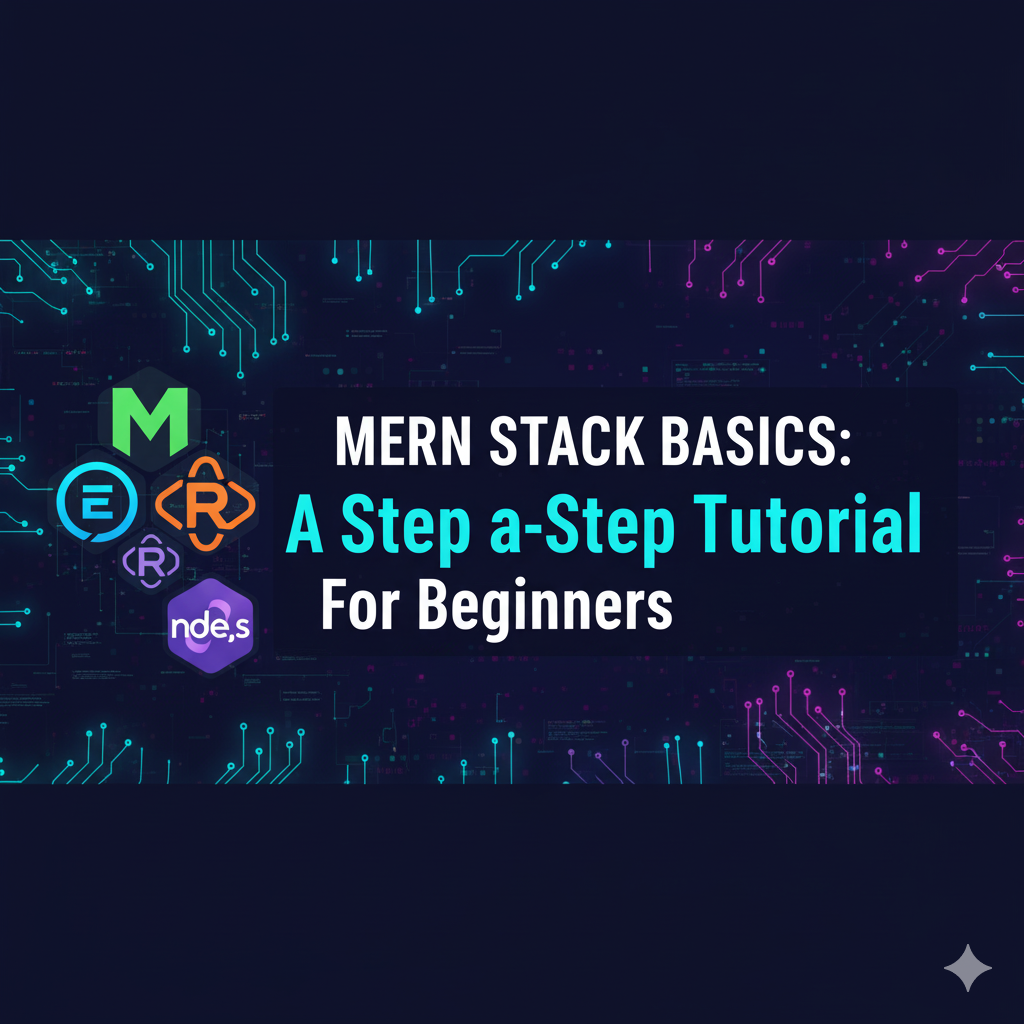MERN Stack Basics: A Step-by-Step Tutorial for Beginners

Understanding the MERN Stack Basics
In 2025, businesses are increasingly adopting full-stack technologies to develop scalable, high-performance web applications. Among these, MERN stack basics have emerged as a key foundation for modern web development. The Top MERN stack web development services provided by leading tech companies empower developers to build end-to-end applications using a single language — JavaScript — across both the client and server sides.
This seamless integration makes MERN an ideal choice for startups, enterprises, and developers looking for efficiency and flexibility. Let’s dive deeper into what makes this technology stack so powerful.
What is the MERN Stack?
The MERN stack is a popular JavaScript-based technology stack used for building dynamic web applications. It consists of four main components:
-
MongoDB – A NoSQL database that stores data in JSON-like documents.
-
Express.js – A lightweight backend web application framework for Node.js.
-
React.js – A front-end library used for building interactive user interfaces.
-
Node.js – A runtime environment that executes JavaScript code on the server side.
Together, these technologies create a powerful, end-to-end framework that simplifies development workflows and enhances application performance.
Why Learn MERN Stack Basics in 2025
Learning MERN stack basics is essential for developers aiming to stay competitive in today’s evolving tech landscape. With the growing demand for real-time, responsive applications, MERN offers speed, scalability, and a unified development environment.
Companies now prefer MERN stack web development services for their ability to streamline deployment and accelerate time-to-market. Moreover, frameworks like Next.js and tools like Redux integrate effortlessly with MERN, making it a top choice for cutting-edge projects.
Step 1: Setting Up Your Development Environment
To start learning the MERN stack, you’ll need to set up your environment properly.
-
Install Node.js and npm: Node provides the runtime, and npm manages dependencies.
-
Set up MongoDB: You can use MongoDB Atlas for a cloud-based setup.
-
Initialize Express: Create your backend server using express-generator.
-
Build the front end with React: Use create-react-app to scaffold a front-end project.
This initial setup lays the foundation for hands-on practice with MERN stack basics and helps beginners grasp the full workflow of full-stack development.
Step 2: Connecting the Components
Once your environment is ready, the next step is to connect all the layers of the stack.
-
Backend (Node.js + Express): Build APIs that handle requests and responses.
-
Database (MongoDB): Use Mongoose to connect your backend to the database.
-
Frontend (React): Fetch data from the backend and render it dynamically.
Each layer communicates through RESTful APIs, allowing smooth data flow between client and server — a fundamental concept in mastering MERN stack basics.
Step 3: Building Your First MERN App
A great way to understand the stack is to build a simple “To-Do” or “Blog” application.
-
Start by defining routes and controllers in Express.
-
Store and retrieve data from MongoDB.
-
Create React components for user input and display.
-
Finally, connect them through API endpoints.
This practical exercise will give you real-world insight into how MERN stack web development services function and how developers streamline operations using reusable components.
Benefits of Using the MERN Stack
-
Single Language Development: MERN allows developers to use JavaScript throughout the stack.
-
High Scalability: MongoDB’s flexible schema and React’s component-based architecture enable rapid scaling.
-
Strong Community Support: MERN is supported by a vibrant open-source community.
-
Enhanced Performance: Non-blocking I/O in Node.js and efficient state management in React improve performance.
These advantages make MERN stack basics a must-learn framework for web developers and businesses aiming to build robust applications efficiently.
Step 4: Deploying Your MERN Application
After development, deployment is a crucial phase. Hosting platforms like Vercel, Heroku, or AWS simplify deployment by integrating CI/CD pipelines. Ensure environment variables, such as database URIs and API keys, are secured.
Optimizing SEO and performance post-deployment ensures your application ranks better and provides a seamless user experience — an essential part of modern MERN stack web development.
Trends Shaping MERN Stack Development in 2025
In 2025, MERN stack development continues to evolve with new integrations and practices:
-
Serverless Deployments: Developers are increasingly using serverless architecture with AWS Lambda and Firebase Functions.
-
AI-Powered Enhancements: Integration of AI models with MERN applications is becoming mainstream.
-
Microservices Architecture: Modular development enables scalability for large enterprise systems.
By mastering MERN stack basics, developers position themselves to adopt these future-ready trends seamlessly.
Conclusion
Understanding MERN stack basics is the first step toward mastering full-stack JavaScript development. From setting up your environment to deploying scalable applications, the MERN stack provides a unified, efficient, and high-performing framework that aligns perfectly with modern business needs. Whether you’re a beginner or an experienced developer, investing time in learning MERN today can open the door to countless opportunities in web development. For businesses seeking expert solutions, partnering with a Trusted software product development company can accelerate your project success through professional MERN stack implementation.
- Questions and Answers
- Opinion
- Motivational and Inspiring Story
- Technology
- Live and Let live
- Focus
- Geopolitics
- Military-Arms/Equipment
- Security
- Economy
- Beasts of Nations
- Machine Tools-The “Mother Industry”
- Art
- Causes
- Crafts
- Dance
- Drinks
- Film/Movie
- Fitness
- Food
- Games
- Gardening
- Health
- Home
- Literature
- Music
- Networking
- Other
- Party
- Religion
- Shopping
- Sports
- Theater
- Health and Wellness
- News
- Culture

